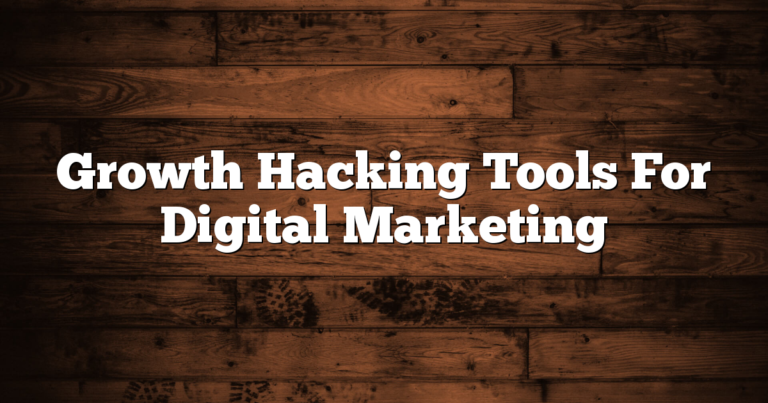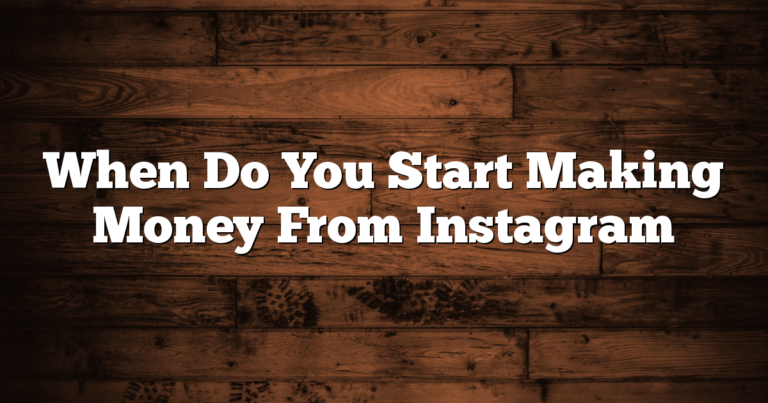How To Start Making Money On Shopify

Hey there, hustlers! Ready to dive into the world of e-commerce and start raking in some serious dough? Well, you've come to the right place because today we're going to spill the beans on how to kickstart your money-making journey on Shopify. Whether you're a tech-savvy teen or a seasoned entrepreneur, this article will guide you through the ins and outs of this popular online platform. So grab a cup of joe, sit back, and get ready to unlock the secrets of Shopify success!
Choosing a Profitable Niche
Alright, let's talk about choosing a profitable niche. Now, when it comes to finding a niche that's gonna make you some serious cash, you gotta do your homework, my friend. It's all about finding that sweet spot where your passion meets the market demand. You don't wanna be stuck in a niche that's as dry as the Sahara desert, right?
First things first, you gotta do some market research. Look for trends, baby! What's hot right now? What are people talking about? Check out social media, online forums, and even do some good old-fashioned surveys. Find out what people are itching to spend their hard-earned dough on. Once you've got a few ideas, narrow it down to the ones that really get your heart racing. You gotta be passionate about what you're gonna sell, otherwise, it's gonna be a real drag.
Next up, you gotta check out the competition. Who's already killing it in your potential niche? Take a good look at what they're doing and figure out how you can do it better. Don't be afraid to put your own spin on things, though. You gotta stand out from the crowd, my friend. Find your unique selling point and make it shine like a diamond.
Lastly, you gotta think about the profitability factor. Yeah, we all wanna follow our dreams and do what we love, but at the end of the day, we gotta pay the bills, right? Look for niches that have a good profit potential. Are people willing to spend big bucks on the products or services in your niche? Can you see yourself making a decent living from it? If the answer is yes, then you've hit the jackpot, my friend.
So, there you have it. Choosing a profitable niche is all about finding that perfect balance between your passion and market demand. Do your research, check out the competition, and make sure it's gonna bring home the bacon. Good luck, and may the niche gods be with you!
Researching Popular Products
So, you're interested in researching popular products, huh? Well, let me tell you, it's a whole new world out there! With the rise of e-commerce and social media, the way we discover and purchase products has completely changed. Gone are the days of relying solely on traditional advertising and word-of-mouth recommendations. Now, we have a wealth of information at our fingertips, and it's up to us to navigate through the noise and find the real gems.
When it comes to researching popular products, one of the first things you'll want to do is tap into the power of online reviews. These days, everyone and their grandma has an opinion on just about everything, and they're not afraid to share it. Whether it's on Amazon, Yelp, or even social media platforms like Instagram, you'll find a treasure trove of reviews from real people who have tried and tested the products you're interested in. Take the time to read through these reviews, paying attention to both the positive and negative feedback. This will give you a well-rounded perspective on the product's strengths and weaknesses.
Another great way to research popular products is by checking out influencer recommendations. Now, I know what you're thinking – influencers, really? But hear me out. These social media stars have built up a loyal following for a reason. They have a knack for discovering the latest and greatest products, and their recommendations can often be spot-on. So, don't be afraid to follow a few influencers in your niche and see what they're raving about. Just keep in mind that not all influencers are created equal, so it's important to do your own research and make sure their recommendations align with your own needs and preferences.
Lastly, don't forget about good old-fashioned market research. This might sound a bit boring, but trust me, it's worth it. Take the time to dig deep into industry reports, consumer surveys, and market trends. This will give you a broader understanding of the market and help you identify popular products that are not only trendy but also have staying power. Plus, it's always good to have some solid data to back up your decisions.
So, there you have it – a few tips to get you started on your journey of researching popular products. Remember, it's all about finding that sweet spot between what's popular and what's right for you. Happy researching!
Setting Up Your Shopify Store
So you've decided to jump into the world of e-commerce and set up your very own Shopify store. That's awesome, my friend! But let me tell you, it's not as simple as just clicking a few buttons and voila, you're in business. There's a whole process to it, and I'm here to guide you through it step by step.
First things first, you gotta choose a killer name for your store. It's gotta be catchy, memorable, and reflect what you're all about. Think about your target audience and what kind of vibe you want to give off. Are you selling trendy clothes for fashion-forward folks? Or maybe you're all about eco-friendly products for the conscious consumer. Whatever it is, make sure your store name screams it loud and clear.
Once you've got your name locked down, it's time to get your hands dirty and start customizing your store. Shopify offers a bunch of sleek and modern themes that you can choose from. Pick one that aligns with your brand and gives off the right vibes. And don't worry if you're not a tech whiz, Shopify makes it super easy to customize your store without any coding knowledge. You can change colors, fonts, and even add your own logo to make it truly yours.
Now that your store is looking fly, it's time to start adding products. This is where the real fun begins! You can either source products yourself or use dropshipping to fulfill orders. If you're going the dropshipping route, Shopify has got your back with their handy integrations. Just find some awesome products that you think your customers will love, add them to your store, and boom, you're in business. Don't forget to write killer product descriptions that make people want to whip out their wallets and buy from you.
So there you have it, my friend. Setting up your Shopify store is a journey, but with a little creativity and some elbow grease, you'll have a killer online shop that's ready to take the e-commerce world by storm. Good luck, and happy selling!
Customizing Your Store's Design
So, you want to make your online store stand out from the crowd, huh? Well, my friend, you've come to the right place! Let's dive into the world of customizing your store's design and make it a true reflection of your brand.
First things first, you need to understand the importance of a well-designed store. It's like the window display of a brick-and-mortar shop, except it's on the internet. Your store's design is the first impression customers get, and you know what they say about first impressions, right? They last! So, you want to make sure your design is visually appealing, easy to navigate, and aligns with your brand identity.
Now, let's talk about the nitty-gritty of customizing your store's design. One of the most powerful tools at your disposal is HTML. With HTML, you can add line breaks, bold tags, and even create bullet lists to organize your content. It's like having a magic wand that allows you to shape your store's appearance exactly the way you want it. So, don't be afraid to get your hands dirty and experiment with different HTML tags to make your store look sleek and professional.
But wait, there's more! You can also play around with colors, fonts, and images to create a unique visual experience for your customers. Think about your brand's personality and the emotions you want to evoke. Are you going for a bold and vibrant look or a more minimalist and elegant vibe? Choose colors that reflect your brand's identity and use fonts that are easy to read. And don't forget about images! High-quality product photos and eye-catching banners can make a world of difference in capturing your customers' attention.
So, my friend, now that you know the importance of customizing your store's design and have some tricks up your sleeve, it's time to get creative! Remember, your store's design is like a virtual storefront, so make it shine and leave a lasting impression on your customers. Happy designing!
Adding Products to Your Store
So, you want to add some products to your store, huh? Well, you've come to the right place! Adding products is a crucial step in setting up your online store and attracting customers. It's like stocking the shelves of a physical store, but in the digital world. Let's dive in and explore the process of adding products to your store.
First things first, you need to gather all the necessary information about the products you want to add. This includes product names, descriptions, prices, and images. Take your time to write compelling and accurate descriptions that will entice potential customers. Don't forget to include any important details, such as sizes, colors, or materials.
Once you have all the information ready, it's time to log in to your store's admin panel. This is where the magic happens! Look for the “Products” or “Inventory” section, depending on your platform. Click on it, and you'll be presented with a blank canvas, ready for you to unleash your creativity.
Now, it's time to fill in the blanks. Start by entering the product name, making sure it's catchy and memorable. Next, write a captivating description that highlights the unique features and benefits of the product. Use descriptive language to paint a vivid picture in the customer's mind. Don't forget to mention any special offers or discounts!
After that, it's time to set the price. Be strategic here and consider factors like production costs, market demand, and competition. You want to find that sweet spot where your product is both profitable for you and attractive to customers. Don't be afraid to experiment with different pricing strategies to find what works best for your business.
Now, let's add some visual appeal to your product. Upload high-quality images that showcase the product from different angles. Customers love to see what they're buying, so make sure the images are clear, well-lit, and visually appealing. You can even add multiple images or a short video to give customers a better idea of what they're getting.
Lastly, don't forget to categorize your products. This will make it easier for customers to navigate your store and find what they're looking for. Create relevant categories and assign each product to the appropriate one. You can also add tags or keywords to further optimize your product's visibility in search engines.
And voila! Your product is now ready to shine in your online store. Repeat this process for each product you want to add, and soon enough, you'll have a fully stocked virtual store that's ready to attract customers and generate sales. Good luck, and happy selling!
Optimizing Product Descriptions
When it comes to optimizing product descriptions, there are a few key factors to consider in order to create compelling and effective content that drives sales. First and foremost, it's important to understand your target audience and tailor your descriptions to their needs and preferences. This means using language and tone that resonates with them, highlighting the benefits and features that are most important to them, and addressing any potential concerns or objections they may have.
Next, you'll want to focus on the structure and formatting of your product descriptions. Break up the text into easily digestible paragraphs or bullet points, using bold or italicized text to draw attention to key points or important information. Consider using subheadings to organize the content and make it easier for readers to scan and find the information they're looking for. Including high-quality images or videos can also enhance the overall appeal of your product descriptions and provide visual context for potential customers.
In addition to the language and structure, optimizing product descriptions also involves incorporating relevant keywords and phrases. This helps improve your search engine rankings and makes it easier for potential customers to find your products. Conduct keyword research to identify the terms and phrases that are most commonly used by your target audience when searching for products like yours. Then, strategically incorporate these keywords into your product descriptions, ensuring they flow naturally and don't feel forced or spammy.
By taking the time to optimize your product descriptions, you can create content that not only captures the attention of your target audience but also compels them to make a purchase. Remember to always put yourself in the shoes of your customers and think about what would make them choose your product over others. With a well-crafted and optimized product description, you can effectively communicate the value and benefits of your product, ultimately driving sales and growing your business.
Setting Competitive Prices
Setting Competitive Prices: Finding the Sweet Spot for Success
Alright, let's talk about setting competitive prices, my friend. This is a crucial aspect of running a successful business, and it's all about finding that sweet spot that keeps your customers coming back for more. You want to be fair, but you also want to make a profit, right? So, let's dive into the nitty-gritty of this topic and uncover some strategies that can help you strike the perfect balance.
First things first, you need to understand your market. Take a good look around and see what your competitors are charging for similar products or services. This will give you a baseline to work with. Now, don't just blindly follow their lead, because you're unique, and your business has its own value proposition. But it's important to know what you're up against, so you can position yourself accordingly.
Next, consider your costs. You can't just pluck a price out of thin air, my friend. You need to take into account all the expenses that go into producing and delivering your product or service. From raw materials to labor costs, shipping fees to overhead expenses, it's crucial to have a clear understanding of what it takes to keep your business running smoothly. Once you have a handle on your costs, you can start crunching the numbers and figuring out a price that covers your expenses while still leaving room for profit.
Now, here's where things get interesting. It's time to analyze your target audience. Who are they? What do they value? What are they willing to pay for your offering? Understanding your customers' needs and desires is key to setting competitive prices. If you're targeting a high-end market that values exclusivity and quality, you can afford to charge a premium. On the other hand, if you're catering to price-sensitive customers, you might need to find ways to offer competitive prices without compromising on quality.
So, my friend, setting competitive prices is all about finding that sweet spot where your customers feel like they're getting a great deal, and you're still making a profit. It's a delicate dance, but with a bit of market research, cost analysis, and customer understanding, you'll be well on your way to pricing success. Remember, it's not just about being the cheapest or the most expensive; it's about finding the right balance that keeps your business thriving.
Implementing Effective Marketing Strategies
Alright, let's dive into the world of marketing strategies! Now, when it comes to implementing effective marketing strategies, there are a few key things you need to keep in mind. First off, it's all about understanding your target audience. You can have the most amazing product or service in the world, but if you're not reaching the right people, it's all for naught.
So, how do you go about understanding your target audience? Well, it's all about doing your research. Take the time to really dig deep and get to know who your ideal customers are. What are their interests, their needs, and their pain points? Once you have a clear picture of who you're trying to reach, you can tailor your marketing efforts to speak directly to them.
Now, let's talk about the importance of consistency in your marketing strategies. You can't just throw a bunch of random tactics out there and hope for the best. No, my friend, you need to have a cohesive plan in place. This means that all your marketing efforts should be aligned and working together towards a common goal. Whether it's social media, email marketing, content creation, or advertising, everything should be consistent in terms of messaging, branding, and tone. This way, you'll build a strong and recognizable brand that resonates with your target audience.
Lastly, let's touch on the power of analytics in marketing. Gone are the days of blindly throwing money at marketing campaigns and hoping they work. With the plethora of tools and platforms available today, you have the ability to track and measure the success of your marketing efforts. By analyzing data and metrics, you can gain valuable insights into what's working and what's not. This allows you to make informed decisions and optimize your strategies for maximum impact. So, don't underestimate the power of analytics in guiding your marketing efforts.
To sum it all up, implementing effective marketing strategies requires a deep understanding of your target audience, consistency in your messaging and branding, and the use of analytics to track and optimize your efforts. By keeping these key points in mind, you'll be well on your way to creating successful marketing campaigns that truly resonate with your audience.
Driving Traffic to Your Store
So, you've got this awesome store, right? You've put in all the hard work to make it look amazing, stocked it with the coolest products, and hired the friendliest staff. But there's just one problem – where are all the customers? It's like a ghost town in here! Well, my friend, it's time to rev up your engines and start driving some serious traffic to your store.
First things first, you need to get your online presence in gear. In this digital age, having a strong online presence is crucial for any business. Start by creating a killer website that showcases your products and tells your brand story. Make sure it's user-friendly and mobile-responsive, because let's face it, everyone's glued to their phones these days. Sprinkle in some search engine optimization (SEO) magic to make sure your website pops up when people are searching for products like yours. And don't forget to harness the power of social media! Get active on platforms like Instagram, Facebook, and Twitter, and engage with your audience. Post eye-catching photos, run contests, and share behind-the-scenes glimpses of your store. Trust me, people eat that stuff up!
But wait, there's more! Don't underestimate the power of good old-fashioned word-of-mouth marketing. Encourage your customers to spread the word about your store by offering incentives like referral discounts or freebies. You could even host special events or workshops in your store to get people talking. And speaking of events, why not team up with other local businesses and host joint promotions or collaborations? It's a win-win situation – you both get exposure to each other's customer base, and it adds a fun twist to the shopping experience. Plus, it's a great way to support your local community and build relationships with other entrepreneurs.
So, my friend, it's time to put the pedal to the metal and start driving traffic to your store. With a killer online presence, some good old-fashioned word-of-mouth marketing, and a dash of collaboration, you'll have customers flocking to your store in no time. Buckle up and get ready for the ride of your life!
Analyzing and Adjusting Your Sales Strategy
So, let's talk about analyzing and adjusting your sales strategy. Now, I know it may sound a bit boring, but trust me, it's crucial if you want to stay ahead of the game in the business world. You see, analyzing your sales strategy means taking a deep dive into all the nitty-gritty details of how you're selling your products or services. It's like putting on your detective hat and figuring out what's working and what's not.
First things first, you need to gather all the data you can get your hands on. This could be sales reports, customer feedback, or even market research. The more information you have, the better equipped you'll be to make informed decisions. Once you have all this data, it's time to roll up your sleeves and start analyzing. Look for patterns, trends, and any areas where you might be falling short. Are there certain products that are selling like hotcakes? Or maybe there's a particular demographic that's showing more interest in your offerings. By identifying these patterns, you can adjust your sales strategy to capitalize on what's working and make improvements where needed.
Now, let's talk about adjusting your sales strategy. This is where the real magic happens. Once you've analyzed all the data, it's time to put your findings into action. This could mean tweaking your pricing strategy, targeting a new audience, or even revamping your marketing materials. The key here is to be flexible and open to change. The business world is constantly evolving, and what worked yesterday may not work today. So, don't be afraid to experiment and try new things. And remember, adjusting your sales strategy is not a one-time thing. It's an ongoing process that requires constant monitoring and fine-tuning.
In conclusion, analyzing and adjusting your sales strategy is like a never-ending puzzle. It's all about gathering data, analyzing it, and making informed decisions based on your findings. By doing so, you'll be able to stay ahead of the competition and keep your business thriving. So, don't be afraid to dive deep into the numbers and make those necessary adjustments. Your sales strategy will thank you for it!
Another post you might find useful is, How To Start Making Money On Snapchat.
I've also written about How To Start Making Money On Spotify, so feel free to check that out, or bookmark it for later!






